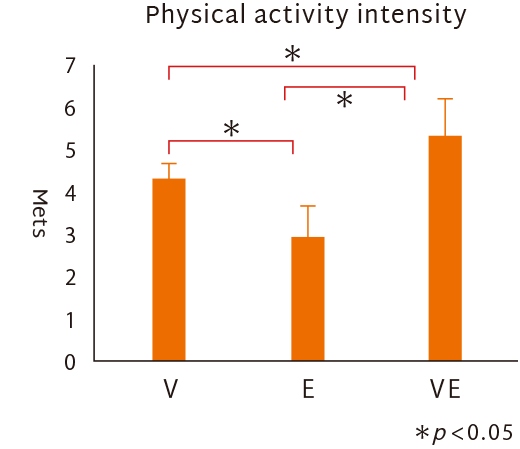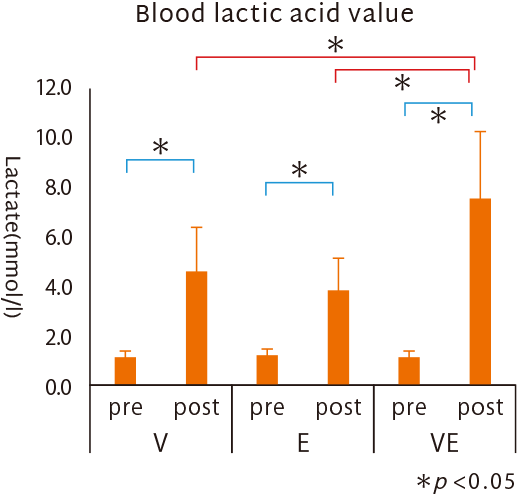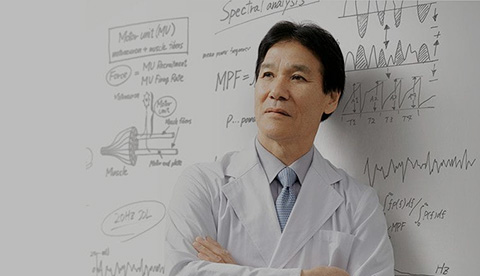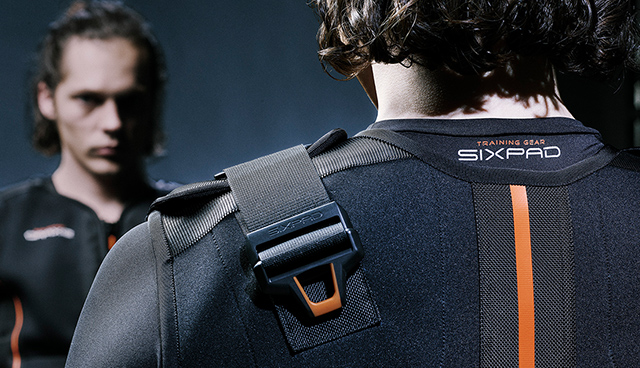EVIDENCE
Research on the effects of training efficiency in relation to combined EMS and voluntary movement
Dr. Kohei Watanabe has conducted extensive research on the topic of exercise in relation to nerves and muscles and has demonstrated that the combination of EMS and voluntary movement (so-called hybrid training) can derive different metabolic responses when used on a bicycle (Watanabe et al. Eur J Appl Physiol 114: 1801-1807, 2014). In addition, he verified the same response occurs even in whole-body exercises.
It is suggested that there is a possibility of a similar biological response to high-intensity exercise even when performing low-intensity exercise enhanced with EMS due to the strong contractions that are difficult to achieve through voluntary movement.
* EMS (Electrical Muscle Stimulation)

Kohei Watanabe, Ph.D. Associate Professor
School of International Liberal Studies, Chukyo University
Expert in exercise physiology and biomechanics. Studied the influence of exercise and aging on the central nervous system and musculature. Director of the International Society of Electrophysiology and Kinesiology.
A study on "the effect of combined voluntary exercise and skeletal muscle electrical stimulation on metabolic response.
- 01Purpose
-
In this study, voluntary movement, skeletal muscle electrical stimulation, and biological load including metabolic dynamics during exercise combining voluntary movement and skeletal muscle electrical stimulation were evaluated quantitatively.
- 02Experiment Outline
-
The subject was a 13-year-old male. After performing voluntary exercise using body-weight load (V), skeletal muscle electrical stimulation to the whole body (E) and exercise combining voluntary movement and skeletal muscle electrical stimulation (VE), we measured respiration metabolism during exercise and blood lactate levels before and after exercise under all three conditions.
Skeletal muscle electrical stimulation included quadriceps, hamstrings, abdominals, and obliques.
Using a whole-body skeletal muscle electrical stimulation device in which electrodes were attached to pecs, lats, biceps, and triceps, we performed electrical stimulation for about 15 minutes with a basic stimulation frequency of 20 Hz. A voluntary movement exercise program of about 15 minutes was also conducted. - 03Result
-
Blood lactic acid before and after voluntary exercise using a body-weight load changed from 1.2 ± 0.2 mmol/l before the trial to 4.6 ± 1.8 mmol/l after the trial.
It changed from 1.2 t 0.2 mmol/1 to 3.8 ± 1.4 mmol/l with the electrical stimulation alone and significantly increased from 1.2 ± 0.3 mmol/l to 7.5 ± 2.7 mmol/l in both electrical stimulus and voluntary exercise.
Exercise intensity calculated from exhalation gas measurement is 4.3 Mets in voluntary exercise, 2.9 Mets in electrical stimulation alone, and 5.3 Mets in both electrical stimulus and voluntary exercise.

- 04Conclusion
-
7.5 mmol/l of blood lactic acid occurred in this exercise with combined use of skeletal muscle electrical stimulation and voluntary exercise, even with low-intensity exercises of about 5.3 Mets.
This result indicates that the possibility of reproduction of the biological response similar to when performing high-intensity exercises, even with low-intensity exercises of about 5.3 Mets.






